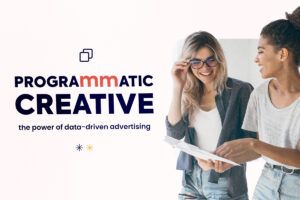Ad viewability is an increasingly crucial metric for publishers and advertisers. This is because the effectiveness of digital ads relies on being seen by real users. In this review on ad viewability, we will explain what it is, why this metric is important, and how to optimize it on your website or app.
What is Ad Viewability?
Ad viewability measures whether online advertising is actually seen on websites. For an ad to be considered “viewed,” at least 50% of the ad must be displayed on the screen for more than one second (50:1) or be within the visible area. For video ads, the ratio is 50:2. Therefore, 50% of the video ad (e.g., a pre-roll or post-roll ad) must have been visible for two seconds. This is defined by the Internet Advertising Bureau (IAB) for viewable impressions in its guidelines. While this is the industry standard definition, many advertisers and publishers are striving to improve ad viewability even further.
Why is Ad Viewability Important?
For advertisers, ad viewability is crucial because they are paying for ad space with the goal of reaching as many potential consumers as possible. If ads are not seen, the advertising investment is wasted. For publishers, ad viewability is important because it can impact their ability to sell ad space in the future. If their ads are not seen, advertisers may choose not to renew their advertising contracts and seek other publishers that can offer higher ad viewability. Furthermore, ad viewability is also important for the credibility of the advertising industry. If ads are not seen, it can lead to distrust from advertisers regarding the effectiveness of digital advertising.
Why has Ad Viewability gained prominence in recent years?
In 2014, ComScore released a report highlighting the importance of monetizing qualitative ads rather than quantitative ones. This was because the report found that 54% of display ads were not viewed, even though advertisers had paid for them. Previously, ad networks primarily valued the total number of ads displayed, rather than the quality of the number of ads actually viewed by users.
As a result, advertisers often measured the success of an advertising campaign based on the click-through rate (CTR), which is the number of clicks divided by the number of ad impressions.
However, an ad can only be clicked if it is viewed by users. Therefore, for advertisers seeking a return on investment (ROI), it is important to ensure their ads are seen by users and that conversions occur as a result.
On the other hand, ad viewability is fundamental for branding, especially in programmatic advertising, which is not focused on performance. In these cases, advertisers are more concerned with maximum accessibility across multiple touchpoints or the penetration of their own advertising message through various digital channels.
For advertisers and publishers, the CPM (cost per thousand impressions) is a relevant metric. The higher the ad viewability, the higher the CPM, as advertisers are willing to pay more for “viewable impressions.” This results in increased advertising revenue for the publisher.
RPM (revenue per thousand impressions) is the equivalent of CPM from the publisher’s point of view. It defines the revenue the publisher receives from delivering 1,000 ads in relation to ad impressions or page impressions.
How to Optimize Ad Viewability on Your Website?
If you are a website publisher looking to improve ad viewability, it is important to first assess your current viewability values. The goal is to achieve a rate above 70%. Some tips for optimization include:
- Strategically position ads within the website content, such as between paragraphs. This increases visitor engagement and attention to the ad.
- Analyze and optimize your website’s page speed using tools like Google’s PageSpeed Insights. Improved page loading speed directly impacts viewability, sales, and/or CPMs.
- Create engaging and informative content that keeps visitors on your site longer and provides real added value.
- Evaluate ad viewability and remove those with viewability below 30%, unless they are significant for sales. In that case, try repositioning them to increase viewability in strategic locations.
- Utilize techniques like lazy loading for ads that are not immediately visible, fixed ads that remain visible as the visitor scrolls, and Google Web interstitials, which have high visibility.
- Select the correct ad size, as larger formats tend to have higher visibility. Additionally, vertical ads have more opportunities to meet the viewability standards set by the IAB.
- Use so-called “sticky ads.” Well-known formats include the Mobile Sticky Footer (320x50px) or the Sticky Skyscraper (160x600px).
- Minimize passbacks, as they cause a delay in loading time that negatively impacts page speed and advertising revenue performance.
- Place ads in the immediately visible area, but avoid positioning them directly above the header to prevent users from quickly scrolling past the ad.
By following these tips, you can improve ad viewability on your site and increase the value of the advertising space you offer.
Conclusion
In summary, viewability is an important metric for publishers and advertisers because it affects the effectiveness of digital advertising and the credibility of the advertising industry.
Advertisers are aligning their budgets based on ad viewability time: the longer an ad is viewed [in seconds], the more advertisers are willing to pay.
This further intensifies the importance of providing advertisers with high-quality ad inventory as a publisher, aligning monetization and optimizations based on ad viewability. Keep in mind that advertisers can track this metric through the system when running campaigns. This means they understand that high-quality campaigns are aimed at qualified inventory.
Lastly, if you are a publisher and wish to partner with an SSP with no fees and total transparency through premium programmatic, with an easy plug-and-play experience, GnetRTB has its own ad exchange, directly connecting global DSPs to key inventories in Latin America. But if you wish to advertise, know that we offer quality inventory and 70% or higher viewability. Access this link and be assisted by our team of experts.




